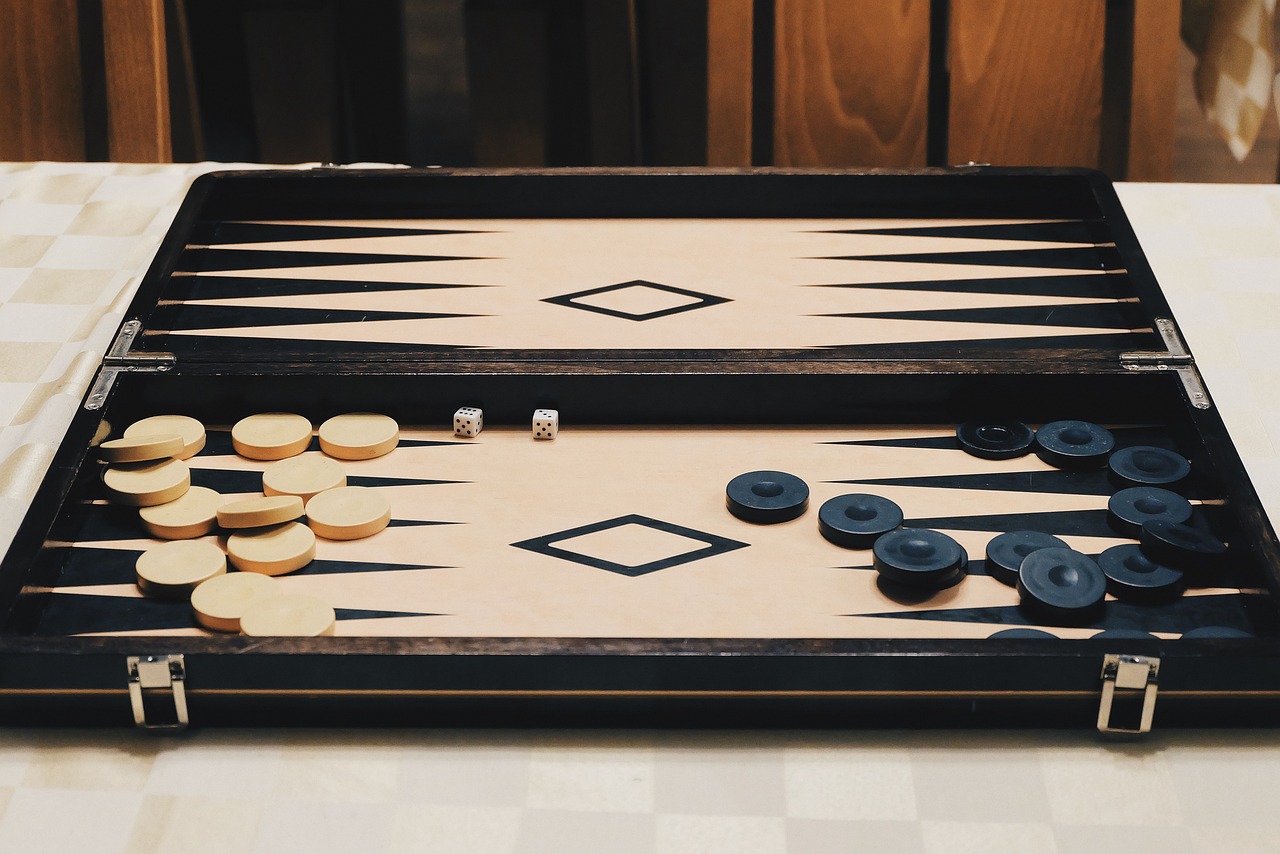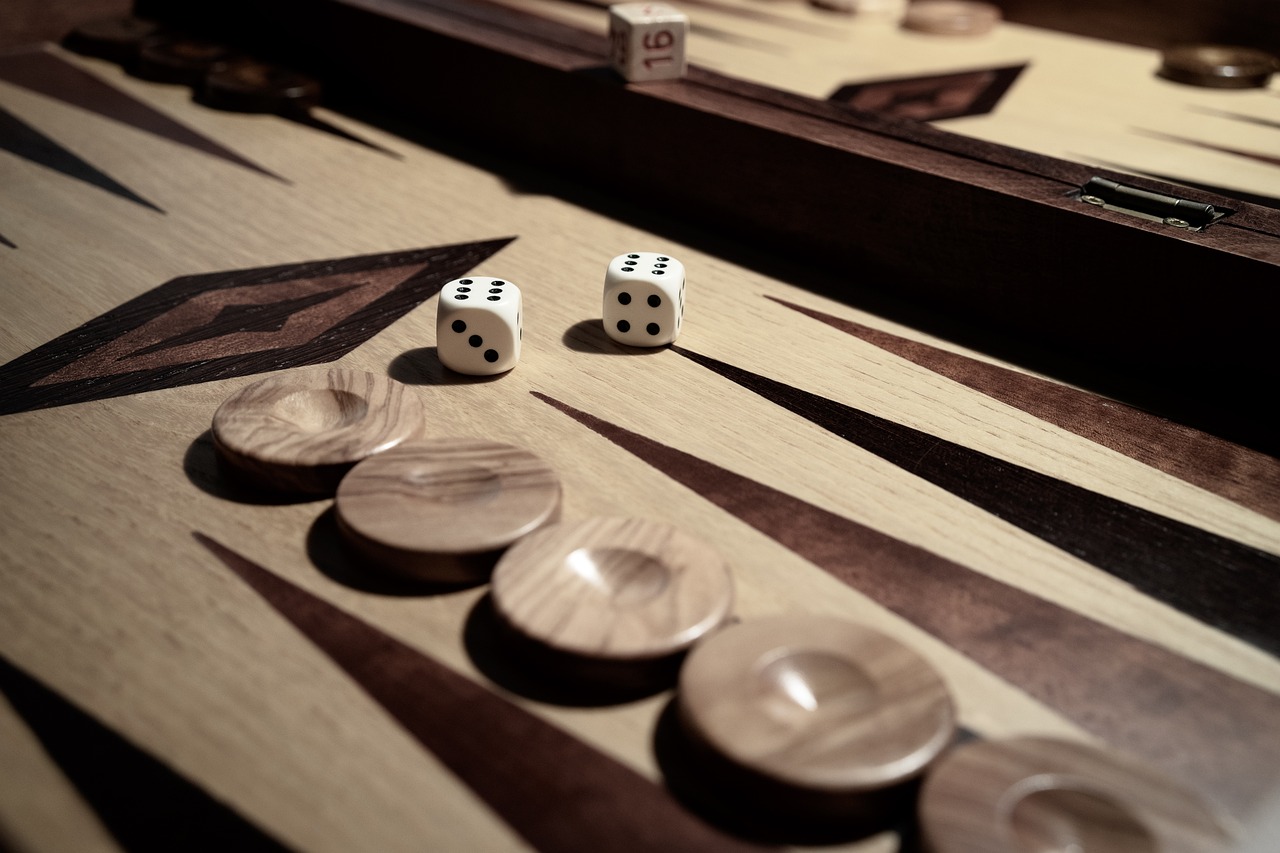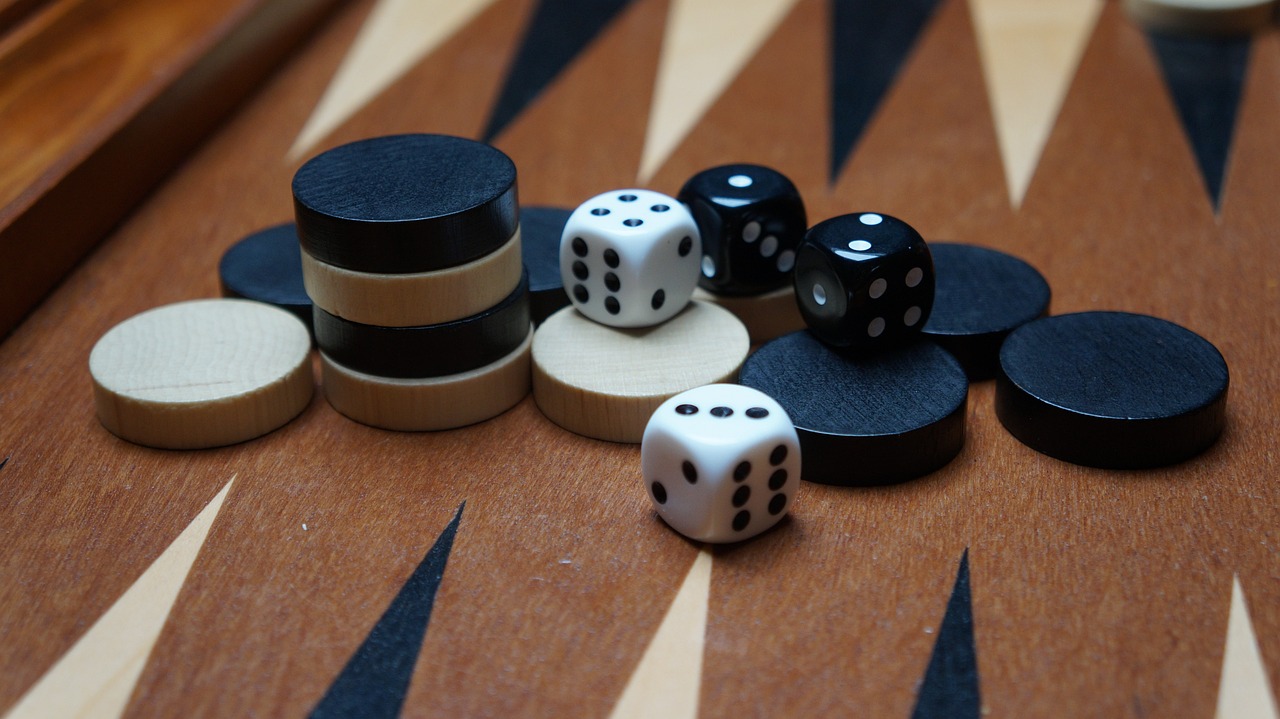If you’re a fan of backgammon and have invested in a Backgammon set, then you’re probably well-versed in the basic rules and strategies of the game. However, to truly enhance your gameplay and take your skills to the next level, understanding the opening rolls is crucial.
The opening rolls in backgammon can significantly affect the outcome of a game, as they determine the initial positioning of your checkers on the board. By understanding the accepted opening rolls and their corresponding strategies, you can gain an advantage over your opponent and set the tone for the rest of the game.
In this guide, we’ll provide a comprehensive explanation of the accepted opening rolls in backgammon and discuss some of the alternatives that you might consider. For those wanting to deepen their knowledge of this special game, there are also other guides to backgammon strategies.
By learning and mastering the opening rolls in backgammon, you can truly enjoy the luxury of your Backgammon set and elevate your game to the next level. So why not take the time to study this essential aspect of the game and become an even better backgammon player?
What is the Benefit of Understanding Opening Rolls?
The opening moves of a game of backgammon are crucial, as they set the stage for the rest of the game. Understanding the best ways to handle the starting position can give you an advantage over your opponent and increase your chances of winning.
It’s important to spend time studying the opening moves and becoming familiar with the reasons why certain plays are better than others. By doing so, you’ll be able to make the best possible play every time, and this knowledge will also improve your overall game.
As you gain experience, it’s worth experimenting with alternate plays for those rolls that have more than one reasonable play. This will help you to develop your strategic thinking and to become more adaptable to different game situations.
Another important aspect to consider is how to reply to your opponent’s openings. By anticipating their moves and planning your own responses, you can gain a strategic advantage and maintain control of the game.
The Basics of Backgammon
Backgammon is not only one of the oldest board games in the world but also one of the most thrilling and challenging ones. It has been played for centuries and is still enjoyed by people of all ages and backgrounds. The game’s unique board, with its 24 narrow triangles called points, creates a dynamic and strategic playing field for each of the two players.
The objective of the game is to move all of your 15 checkers, or chips, off the board before your opponent does. The movement of the checkers is dictated by the roll of two dice, which adds an exciting element of chance and unpredictability to each game. Players must carefully consider the various possible moves available to them on each turn, deciding whether to move one or multiple checkers, which points to land on, and how to manoeuvre around their opponent’s pieces.
Successful players rely on a combination of skill, strategy, and a bit of luck to outmanoeuvre their opponent. One popular strategy is to create “blocks” by positioning multiple checkers on the same point, making it difficult for the opponent to move past them. Players may also sacrifice one or more checkers to gain an advantage in the long run. Timing is also key, as a well-timed move can shift the momentum of the game in one’s favour.
Despite the game’s inherent complexity, it is accessible to players of all skill levels. Novices can learn the basic rules and strategies in a matter of minutes, while experienced players can spend a lifetime mastering the intricacies of the game.
Whether played casually with friends or competitively in tournaments, backgammon offers endless hours of fun and intellectual stimulation. So next time you’re looking for a game that’s both challenging and entertaining, consider picking up a backgammon board and experiencing the excitement for yourself!
Quick History of Backgammon
Backgammon is a game of great historical significance, considered to be the oldest board game in recorded history. The game’s origins date back to over 5,000 years ago, to the city of Ur in Mesopotamia, present-day Iraq and Kuwait. The Sumerian culture, which thrived during this period, made significant contributions to mathematics, language, and culture. Among their many achievements was the invention of the world’s first known board game, which later evolved into backgammon.
Sir Leonard Woolley, a British archaeologist, led an excavation of the royal tombs in Ur between 1922 and 1934, which resulted in a significant discovery. Woolley uncovered an inlaid gaming board, which was determined to be the oldest-known backgammon board. Additionally, four other gaming boards were found in the tombs, providing significant evidence of the game’s popularity in ancient times.
Backgammon has a rich history, with versions of the game being played in many cultures around the world. For example, the ancient Egyptians played a form of the game on a board of 30 squares called the “Game of Thirty Squares” or Senet, whilst the Romans played a game called Ludus Duodecim Scriptorum, later called tabula. In England, during the Middle Ages, the game was referred to as ‘Tables’, in Italy ‘Tavola Reale’, and in Spain ‘Tablas Reales’, all meaning “Royal Tables”. The game was played by all classes of society in many cultures, although in some societies, it was outlawed, such as in Japan during the reign of Empress Jito.
The name “backgammon” was coined around the mid-seventeenth century by the Saxons, who called it “bac” (back) “gamen” (game) because the checkers had to re-enter the game after being hit, and thus “go back”.
Backgammon’s rules were codified by Edmond Hoyle, a British writer on games, in 1745, and his strategy recommendations remained standard for almost two centuries. The rules were modified in 1931 in the United States with the introduction of the doubling cube.
A Guide to Opening Rolls
During normal play, there are 36 different ways that two six-sided dice can be rolled. However, if we eliminate duplicates, such as 1-2 and 2-1, we are left with 21 possible combinations for each turn. In the case of backgammon’s opening rolls, the number of possible combinations is further reduced to 15 since doubles are not included. In order to describe the moves, the standard 24-point notation system is used. Sometimes, there is only one correct option for the opening move, leaving no alternative moves.
Best Opening Rolls
In backgammon, the opening roll is one of the most important aspects of the game. A good opening roll can set the tone for the rest of the game, whilst a bad opening roll can put you on the back foot from the start. Understanding the best opening rolls and how to play them can give you a significant advantage in your games.
The best opening rolls in backgammon are the 3-1, 4-2, 6-1, and 5-3. These rolls are considered the best because they offer the most strategic advantages and options for the player.
Let’s start with the 3-1 opening roll. This roll is always played as 8/5, 6/5, which secures the 5-point. At first glance, the 3-1 roll may not seem like a strong opening move, as it only advances the checkers 4 pips. However, there are several strategic reasons why it’s considered the best opening roll in backgammon.
Firstly, the 8/5, 6/5 move secures a point, which on its own acts as a barrier to the opposing checkers and provides a safe landing point for your own checkers. Furthermore, the 5-point is a home board point which confers additional advantages. It acts as a blocking point for the opponent’s checkers when re-entering from the bar and also forms the beginning of a home board prime. On top of all of this, the 5-point, on both sides of the board, is considered to be the most important point on the board. Securing the 5-point prevents your opponent from anchoring there. If they secure your five-point, it is almost impossible for you to create an effective prime.
The 4-2 is the second-best opening roll in backgammon. It is always played as 8/4, 6/4, and there are no other alternatives to consider, as this has been proven by computerised rollouts. The benefits of this roll are similar to the advantages of an opening 3-1.
The 8/4, 6/4 move secures a point. The 4-point is also a home board point. Each additional home board point you secure gives your opponent fewer ways to enter when they are hit. That means they must play more conservatively while you get to play aggressively. Although not as strong as the 5-point, the 4-point is still a valuable point to secure. It is a place where your checkers can land safely. With excess material on the 4-point, it can be used as a launching pad for hitting blots or building points deeper in your home board. The 4-point is also good to own if you intend to build a prime. Another advantage of the 4-2 is that it moves a checker off the over-stacked 6-point. These excess checkers are far better off being utilised elsewhere in the home board.
The 6-1 is the third-best opening roll in backgammon. As with the other rolls on this list, there is only one widely accepted way to play the roll. The 6-1 should be played 13/7, 8/7 to secure the bar-point. In the early stages of the game, it is always useful to secure the bar-point. It is a good blocking point because it is exactly six pips away from the opponent’s back checkers. This prevents them from escaping with a 6-6. The bar-point also fills in the gap between the 8-point and 6-point, creating a 3.
Keep in Mind
It is widely acknowledged that mastering the opening phase of a backgammon game is crucial because every game has one. Whilst middle or late-game blunders are more noticeable, mistakes on opening replies may seem less dramatic, as both players jockey for position with the advantage often changing hands repeatedly until the game settles into its mid-phase. You may doubt the importance of avoiding errors that are only marginally wrong, but repeated mistakes can cost you dearly in the long run. Poor play may lead to finding yourself behind more often than your opponent or feeling unlucky as your blitzes tend to fizzle out. With better opening play, you may have secured an advanced anchor more often, had more material in the zone for pursuing a blitz, and been blitzed less frequently if you had not split against an opponent in a blitzing stance. However, no single play can be pinpointed as the cause of these problems, as virtually any play, no matter how poor, can lead to success often enough to mask the long-term effect of your errors. Backgammon does not consistently punish poor play enough to prompt a player to make better decisions by intuition.
By studying opening replies and seeking to understand why various plays turn out to be better, you can make your play more deliberate and purposeful, and be more aware of the various ways a game can develop. Not just on the opening reply, but on every early-game play, you should consciously note features of the position as it unfolds. Ask yourself questions such as: How many checkers does my opponent have in the zone? Are their checkers better positioned for priming or for blitzing? How urgent is it for me to get my back checkers split? Is my opponent’s 8-point stripped or fortified? What stance am I in – blitzing or priming? Which of my points are stacked or stripped? How many commitments does my opponent already have, and can I add another? Who is winning the race? It’s never too soon to notice.
Most Importantly, Have Fun!
Backgammon is an ancient game played on a board with 15 checkers by each player. The objective of the game is to move the checkers in opposite directions around the board and bear off all of them before the opponent does. Backgammon is played with the roll of dice, which adds an element of chance to the game. Understanding the opening rolls in backgammon is essential to gain an advantage over your opponent and set the tone for the rest of the game. The opening rolls significantly affect the initial positioning of your checkers on the board. By learning and mastering the opening rolls in backgammon, you can elevate your game to the next level.
The history of backgammon dates back to over 5,000 years ago in the city of Ur in Mesopotamia. Backgammon has a rich history, and versions of the game were played in many cultures worldwide. The name “backgammon” was coined by the Saxons around the mid-seventeenth century because the checkers had to re-enter the game after being hit, and thus “go back.” Backgammon’s rules were codified in 1745 by Edmond Hoyle, a British writer on games, and his strategy recommendations remained standard for almost two centuries.
During normal play, there are 36 different ways that two six-sided dice can be rolled, but in backgammon’s opening rolls, the number of possible combinations is further reduced to 15 since doubles are not included. In order to describe the moves, the standard 24-point notation system is used. The opening roll is one of the most important aspects of the game as a good opening roll can set the tone for the rest of the game, whilst a bad opening roll can put you on the back foot from the start.
The best opening rolls in backgammon are the 3-1, 6-5, 6-4, and 5-4, according to expert players. These opening rolls allow you to move your checkers to advantageous positions and take control of the game. Other opening rolls, such as 2-1 and 5-3, require careful consideration and planning. The best opening rolls can vary depending on the player’s style and the specific situation.
Conclusion
In conclusion, understanding the opening rolls in backgammon is crucial to gain an advantage over your opponent and set the tone for the rest of the game. By learning and mastering the opening rolls in backgammon, you can elevate your game to the next level. Backgammon is a thrilling and challenging game that requires skill, strategy, and a bit of luck.







